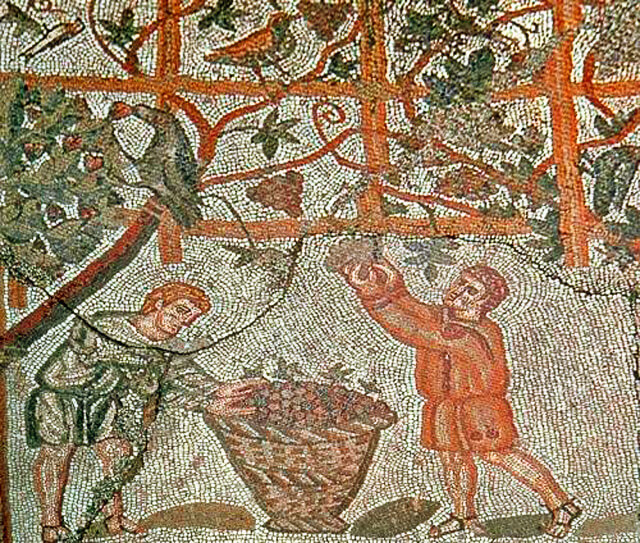- Martina Brescia
- ENOLOGIA
- 0 likes
- 5639 vues
- 0 commentaires

In ancient Rome, the production of wine was a very complex practice because of the difficulty in managing the fermentation. Already during the pressing of grapes was distinguished quality wine from that poorer reserved for the consumption of the poorest classes.
The most fine wine was decanted and stored in rooms that were in the top of the house, where were concentrated smoke and heat, as opposed to modern winemaking who prefers the underground cellars, fresh and with the right degree of humidity. To preserve or “spike” the wine were in use several methods: the addition of sea water, honey or spices, marble dust or clay, egg white, goat milk, cranberry berries, resins and other substances. These devices are not much different from today's additions to the wine; although the wine-making has improved, it still happens that the wine is affected by defects or diseases treatable with metabisulfite, activated carbon, paraffin, citric acid, etc.
In ancient Rome, according to the vine variety, the wine could be stored 10, 20, even 100 years old, as now very old wines were considered precious.
On amphorae, which were sealed with corks and clay, pitch or plaster, was placed an inscription, the “pittacium”, whith the content and the year of production, indicated with the name of the consul in charge, in practice label ancestor.




Commentaires (0)